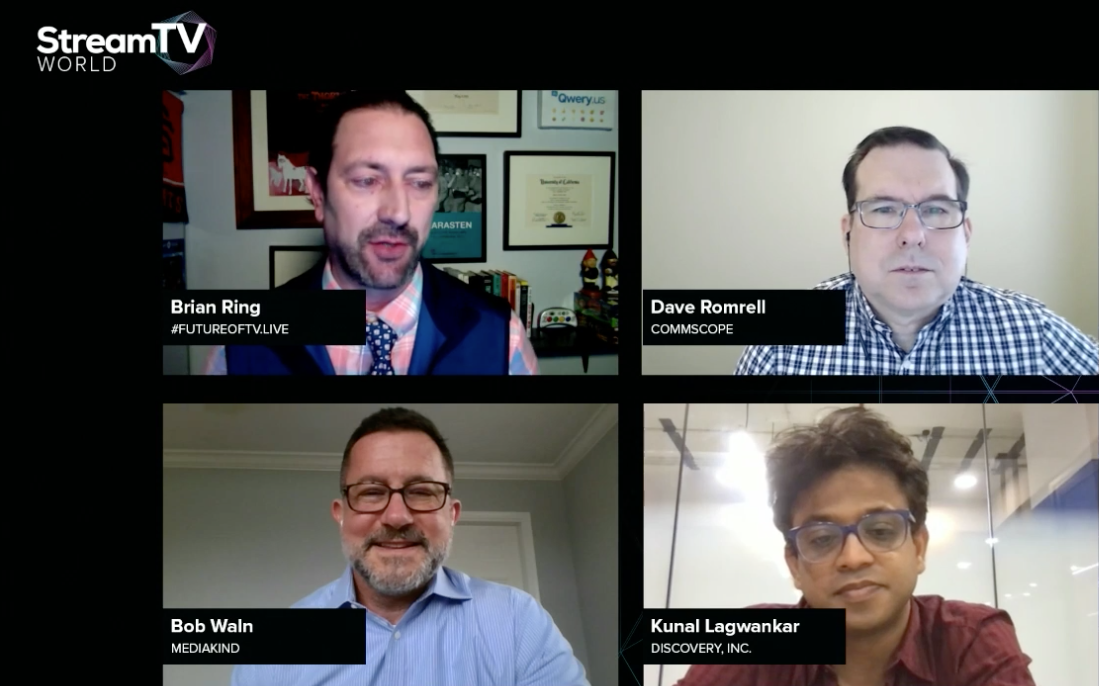
Earlier this week, I was pleased to be part of a panel session at StreamTV World alongside Dave Romrell, Engineering Fellow in the Advanced Research Group at CommScope; Kunal Lagwankar, Director of Product Management at Discovery, Inc; and the moderator, Brian Ring, Principal Analyst at #FutureofTV.Live. Together, we discussed topics for ad insertion models in both linear and non-linear viewing experiences.
At the heart of the discussion was an extensive conversation around the advantages and challenges of Server-Side Ad Insertion (SSAI) and Client-Side Ad Insertion (CSAI), a topic I covered on these pages in a recent blog post. I believe we need both SSAI and CSAI because they solve different things and can supply diverse things as we go forward. We need a marriage of the two to determine the best viewing experience to give to the consumer. In a recent article for TV Technology, my MediaKind colleague Olivier Milet described how the deployment of CSAI and SSAI in combination based on content type and infrastructure “provides the greatest number of options for monetization while ensuring that customers receive the best possible experience.”
The balance between SSAI and CSAI
One of the biggest advantages of SSAI, for instance, is that it can handle scaling very well and is ideal for putting messages out in front of large numbers of viewers. It’s also very successful in helping prevent ad blockers, providing reliable ad delivery measurement, and, critically, offering low latency delivery. Of course, there are challenges around SSAI, especially around live streaming and the drive to decrease latency in the longer term. To date, the latency that’s been inherent within adaptative streaming technologies has been well managed. However, we must begin producing targeted ad technology that can meet the demand of higher-performing workloads – and quickly. As we introduce even lower latencies into streams, there will be increased pressure to deliver faster ad turnaround. If we don’t address this area quickly, we will find ourselves in a situation where notifications will simply arrive too late to respond – particularly for live events.
The opportunity with CSAI lies in enabling interactive content – a big advantage in the sports world. This represents an exciting opportunity for our industry. MediaKind believes that new opportunities – such as the integration of gaming, new camera angles, truly targeted statistics, and fantasy league services – will all be performed client-side, primarily because each of these areas is unique and highly tailored to each user. Our team also sees CSAI as the best way to introduce non-traditional ads, new advertising units and locations, and sponsorships into the content.
How to better manage ad traffic types
Another interesting topic of discussion that Brian raised was around the idea of repeat ads or the inability to cap frequency. This might be the result of multiple ADSs being used to fill avails. Whether it makes sense to go out to multiple ADSs is dependent on whether the service provider wants to direct traffic in a certain way. Specific demand platforms may eventually specialize in certain types of advertising in designated categories, and it’s an area that I can see happening very soon – especially in the news and sports space, rather than the entertainment category.
I think the main challenge to overcome is routing correctly, identifying the groups you want to go after, and doing so in a reasonable fashion so that the data is usable, interpretable, and flexible if necessary. This shouldn’t be a waterfall approach – especially from a latency perspective. We need to create fallbacks to ensure that when a demand platform is down, ads are still served, the opportunity isn’t lost, and it’s a quality consumer experience.
Quality of experience should always be front of mind
During the StreamTV Ad Summit in August, I noted an interesting remark from Olivier Karra of Broadpeak. He described how the industry has traditionally focused on quantitative data to optimize the value of the ad inventory. However, today the value also lives in qualitative data – consumers now place a large emphasis on the quality of their streaming service, too.
For this reason, I think it’s important to stress how CSAI will make sense for some forms of monetization that are highly specific to each consumer (e.g., more interactive forms of content). Conversely, SSAI will continue to be the best approach for putting common experiences and messages in front of large audiences because of its centralized insertion. In short, it’s not a zero-sum game – it’s about providing the best possible consumer experience and optimizing ROI.
The chain from content to consumer is changing, with new distributors emerging and constantly evolving. There is pressure for content owners and rights-holders to figure out which platform will generate the most revenue for them. But choice is a good thing, and the added competition from even more distributors entering this space will be a good thing for our industry overall. We all want to create more accessible pathways for content to reach consumers.
You can now watch Bob Waln’s StreamTV World panel session on-demand.


